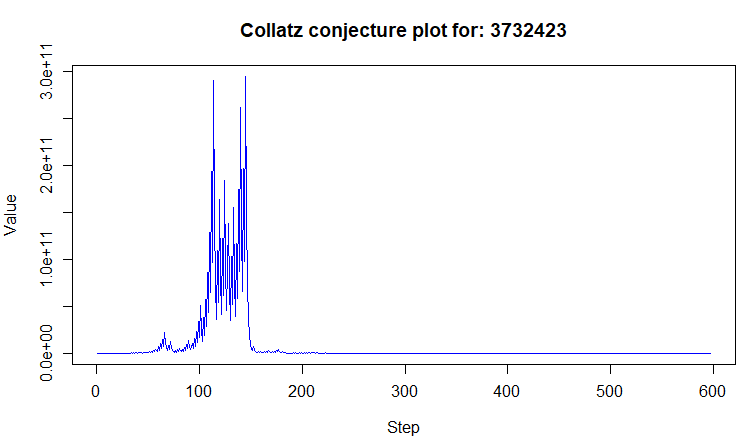The Collatz conjecture is one of mathematics' most enduring and fascinating problems. First proposed by Lothar Collatz in 1937, the conjecture explores how a simple iterative process applied to any positive integer \( n \) always converges to the number 1. Despite its apparent simplicity, the conjecture remains unproven for all integers, making it a captivating topic for mathematicians and computer scientists.
Here is how the process works:
Even Numbers
If \( n \) is even: \[ f(n) = \frac{n}{2} \]
Odd Numbers
If \( n \) is odd: \[ f(n) = 3n + 1 \]
The conjecture asserts that repeatedly applying these rules will eventually lead to 1, regardless of the starting value of \( n \). For example:
Starting with \( n = 6 \): \( 6 \to 3 \to 10 \to 5 \to 16 \to 8 \to 4 \to 2 \to 1 \). Starting with \( n = 27 \): the sequence becomes significantly longer but still ends at 1.
While mathematicians have verified the conjecture for an enormous range of values, a general proof remains elusive. Its unpredictable behavior has implications for number theory, computation, and chaos theory.
The CollatzR package is a lightweight tool designed for anyone interested in exploring the properties of Collatz sequences. Whether you are a student, researcher, or just a curious enthusiast, the package provides easy-to-use functions for generating and visualizing sequences.
Installation
# Install from GitHub using devtools
if (!require("devtools")) install.packages("devtools")
devtools::install_github("SulmanOlieko/collatzR")Generate Sequence:
collatz_sequence(27)
This function takes an integer input and returns the Collatz sequence. For example, calling collatz_sequence(27) will generate a sequence that converges to 1 after numerous iterations.
Visualize Sequence:
visualize_collatz(27)This function creates a visualization of the sequence. The x-axis represents the iteration steps, while the y-axis shows the values of the sequence. Patterns in the sequence can often provide insights into its structure.
The Collatz conjecture isn’t just a recreational problem; it has broader implications:
- Algorithmic Efficiency: Understanding the behavior of the sequence can help improve iterative algorithms and understand computational limits.
- Mathematical Patterns: The conjecture highlights unexpected patterns and regularities in seemingly random systems.
- Educational Tool: The conjecture is often used to introduce students to concepts in recursion, iteration, and dynamic systems.
The Collatz conjecture exemplifies how simple rules can lead to complex, unpredictable behavior. Tools like CollatzR make it easier to experiment with and analyze this fascinating problem. While the conjecture remains unsolved, exploring it can deepen our understanding of mathematics and computational processes.

